Adinkra symbols are visual symbols that originated in West Africa, specifically in the Kingdom of Ashanti in present-day Ghana. They are used in a variety of contexts, including as decorative elements on cloth, pottery, jewelry, and as symbols of specific concepts or ideas.
The symbols are geometric in nature and are typically made up of a series of lines, dots, and other shapes. Each symbol has a specific meaning, and many of them are associated with specific proverbs or phrases. Some examples of common Adinkra symbols include the "sankofa" symbol, which represents the importance of learning from the past, and the "gye nyame" symbol, which represents the supreme power and sovereignty of God.
Adinkra symbols are an important part of the cultural heritage of the Ashanti people and are widely recognized and used throughout West Africa. They are often used as a way to communicate ideas and values in a visual way, and are an important aspect of traditional Ashanti art and craft.
120+ Adinkra Symbols Collection
Unleash the vibrant spirit of Africa with our Adinkra Symbols Vector Bundle! Grab 120+ jaw-dropping, high-res vectors that scream wisdom and culture. Time to electrify your designs and leave your audience spellbound. Act fast, limited time offer – Download your bundle now and become the ultimate design guru!
(INSTANT DIGITAL DOWNLOAD)
>> Download Now<<
List of 121 Adinkra Symbols and Meanings
| # | Symbol | Name | Meaning & Philosophical Significance |
|---|---|---|---|
| 1 | Gye Nyame |
Except God. A symbol expressing the omnipotence of God. Probably the most popular Adinkra symbol. It is featured on Ghana's largest-denomination banknote, the 200 cedi note. |
|
| 2 | Sankofa |
Go back and fetch it. Sankofa is an African word from the Akan tribe in Ghana. The literal translation of the word and the symbol is “it is not taboo to fetch what is at risk of being left behind.” Essentially every experience in life should leave you wiser than it met you and even if it was a bad experience, you would have learnt not how to go about it. |
|
| 3 |  |
Sankofa | Another variation of Sankofa Symbol |
| 4 | 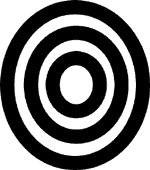 |
Adinkrahene |
Chief of the adinkra symbols. Symbol of Greatness, Charisma and Leadership This symbol is said to have played an inspiring role in the designing of other symbols. It signifies the importance of playing a leadership role in the community. Great leaders are charismatic, and this symbol exemplifies the honourable qualities of a good leader. |
| 5 | 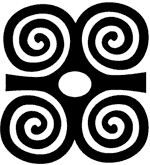 |
Dwennimmen |
Ram’s Horns. Symbol of humility together with Strength. The ram will fight fiercely against an adversary, but it also submits humbly to slaughter, emphasizing that even the strong need to be humble. |
| 6 | 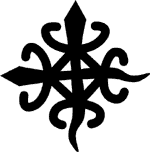 |
Funtumfunefu Denkyemfunefu |
Siamese crocodiles. Symbol of Democracy and Unity The Siamese crocodiles share one stomach, yet they fight over food. This popular symbol is a reminder that infighting and tribalism are harmful to all who engage in it. |
| 7 | Nkyinkyim |
Twisting. Symbol of Initiative, Dynamism and Versatility. A symbol representing the tortuous nature of life's journey. |
|
| 8 |  |
Odo Nnyew Fie Kwan |
Love does not lose its way home. Those led by love always end up in the right place. |
| 9 | 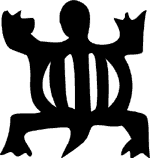 |
Denkyem |
Crocodile. Symbol of Adaptability. The crocodile lives in the water, yet breathes the air, demonstrating an ability to adapt to circumstances.
|
| 10 | 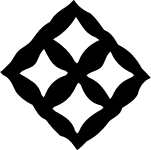 |
Aban | Fortress (or castle). A symbol of strength, seat of power, authority, and magnificence |
| 11 | 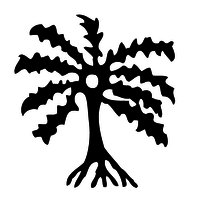 |
Abe Dua |
Palm Tree. Symbol of Wealth, Resourcefulness, and Self-sufficiency.The palm tree is a symbol of resourcefulness because many diverse products emanate from that single tree: wine, oil, brooms, etc. |
| 12 |  |
Adwo |
Calmness. Symbol of Serenity, Peace, Calmness |
| 13 |  |
Agyindawuru |
Agyin's gong. A symbol of loyalty, faithfulness, alertness, and dutifulness. Designed to commemorate the faithfulness of one Agyin who was a dutiful servant and gong-beater of the Asantehene.
|
| 14 | 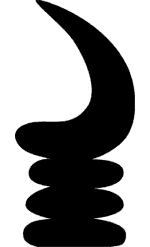 |
Akoben |
War horn. A symbol of vigilance, readiness to be called to action, readiness, and voluntarism. Akoben is a horn used to sound a battle cry.
|
| 15 | 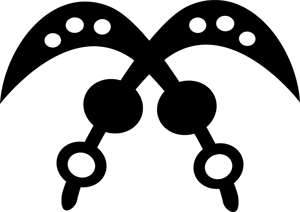 |
Akofena |
A sword of war (or the state ceremonial swords). Symbol of Courage, Valor, and Heroism. The crossed swords were a popular motif in the heraldic shields of many former Akan states. n addition to recognizing courage and valor, the swords can represent legitimate state authority. |
| 16 | 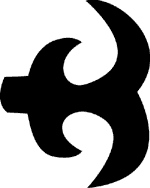 |
Akoko Nan |
The leg of a hen. A symbol of nurturing and discipline. From the Akan proverb, “Akoko nan tia ba na enkum ba,” literally, “The foot of a hen steps on the child (chick) but it doesn't kill the child (chick).”
|
| 17 | 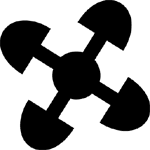 |
Akoma Ntoaso |
Linked Hearts. A symbol of agreement, togetherness and unity or a charter. An amplification of the concept of Akoma.
|
| 18 | 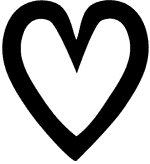 |
Akoma |
Heart. A symbol of patience, love, goodwill, tolerance, faithfulness, fondness, endurance, and consistency.
|
| 19 | 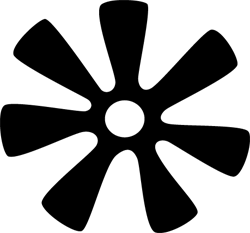 |
Ananse Ntentan |
Spider's web. A symbol of wisdom, craftiness, creativity, and the complexities of life. It is the web of Ananse, the crafty spider who is preeminent in African folklore.
|
| 20 |  |
Ani Bere A Enso Gya |
No matter how red-eyed one becomes (i.e. how serious one becomes), his eyes do not spark flames. A symbol of patience, self-containment, self-discipline, and self-control.
|
| 21 | 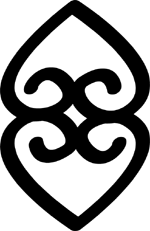 |
Asase Ye Duru |
The earth has weight. A symbol of providence and the divinity of Mother Earth. This symbol represents the importance of the Earth in sustaining life.
|
| 22 | 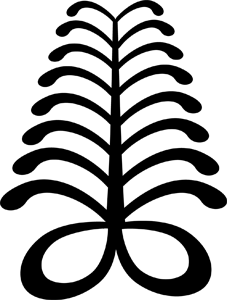 |
Aya |
Fern. A symbol of endurance, independence, defiance against difficulties, hardiness, perseverance, and resourcefulness. The fern is a hardy plant that can grow in difficult places. “An individual who wears this symbol suggests that he has endured many adversities and outlasted much difficulty.” (Willis, The Adinkra Dictionary)
|
| 23 | 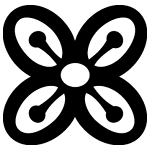 |
Bese Saka |
Sack of cola nuts. A symbol of affluence, power, abundance, plenty, togetherness, and unity. The cola nut played an important role in the economic life of Ghana. A widely used cash crop, it is closely associated with affluence and abundance. This symbol also represents the role of agriculture and trade in bringing peoples together.
|
| 24 | 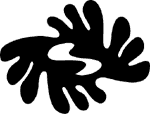 |
Bi Nka Bi |
No one should bite another. A symbol of justice, fairplay, freedom, peace, forgiveness, unity, harmony, and the avoidance of conflict or strife.
|
| 25 | 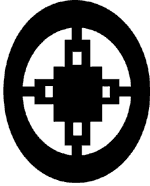 |
Dame-Dame | Chequered or Board Game. A symbol of craftiness, intelligence, and strategy. |
| 26 | 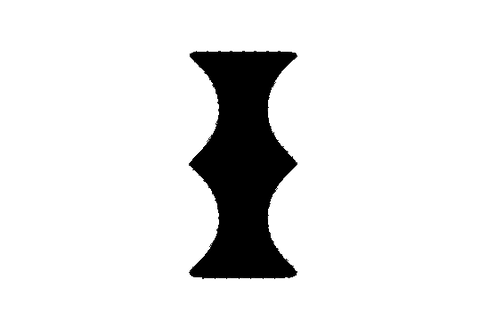 |
Dono Ntoaso | The double talking drum or dono; joined tension talking drum. A symbol of united action, alertness, goodwill, praise, rejoicing, and adroitness. |
| 27 |  |
Dono | The tension talking drum. A symbol of appellation, praise, goodwill and rhythm. |
| 28 |  |
Duafe |
Wooden comb. A symbol of feminine consideration or good feminine qualities such as patience, prudence, fondness, love, and care. The meaning of this symbol is characterized slightly differently in “The Adinkra Dictionary” and “The Values of Adinkra Symbols”; the former emphasizes more abstract qualities of feminine goodness, love and care, while the latter has a more literal interpretation, looking one’s best and good hygiene.
|
| 29 |  |
Eban |
Fence. A symbol of safety, security, and love.
The home to the Akan is a special place. A home which has a fence around it is considered to be an ideal residence. Because of the security and the protection that a fence affords, the symbol is also associated with the security and safety one finds in love. |
| 30 | Epa |
Handcuffs. A symbol of law and justice.
Adolph Agbo, in “Values of Adinkra Symbols” notes that handcuffs were introduced in Africa as a result of the slave trade, and later became popular among chiefs in cuffing offenders of the law. “The symbol reminds offenders of the uncompromising nature of the law. It, however, discourages all forms of slavery.” |
|
| 31 | 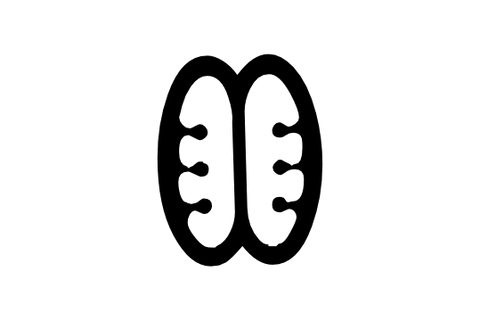 |
Ese ne Tekrema |
Teeth and tongue. A symbol of improvement, advancement, growth, the need for friendliness and interdependence. The teeth and the tongue play interdependent roles in the mouth. They may come into conflict, but they need to work together.
|
| 32 |  |
Fafanto | Butterfly. A symbol of transformation, change, tenderness, gentleness, honesty, and fragility. |
| 33 |  |
Fihankra |
An enclosed or secured compound house. A symbol of brotherhood, safety, security, completeness, and solidarity.
|
| 34 |  |
Fofo |
A yellow flowering plant (bidens pilosa). A symbol of warning against jealousy and covetousness. When the fofo’s petals drop, they turn into black spiky-like seeds. The Akan liken the nature of this plant to a jealous person.
|
| 35 |  |
Gyawu Atiko |
The back of Gyawu's head. A symbol of valor and bravery. Used interchangeably with the Kwatakye Atiko symbol
|
| 36 | 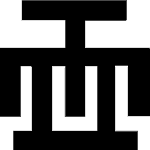 |
Hwehwemudua |
Measuring rod (rod of investigation) or rule. A symbol of excellence, quality control, superior quality, perfection, knowledge, and critical examination.
|
| 37 |  |
Hye Wo Nhye |
Burn you won't burn (fig. unburnable). A symbol of toughness, endurance and imperishability; also a symbol of permanence.
|
| 38 |  |
Kramo Bone Amma Yeanhu Kramo Pa |
The bad muslim makes it difficult for a good one to be recognized. A symbol of warning against deception and hypocrisy.
|
| 39 | 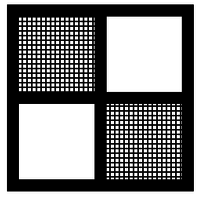 |
Kuronti ne Akwamu |
Kuronti and Akwamu. A symbol of democracy, sharing ideas, taking council.
|
| 40 |  |
Kwatakye Atiko |
The back of Kwatakye's head. A symbol of valor and bravery. This symbol is also called Gyawu Atiko. It is said to be a hairstyle of Kwatakye, a war captain of old Asante.
|
| 41 | 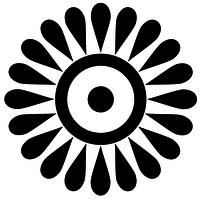 |
Mako |
Peppers. A symbol of inequality and uneven development; from the proverb "All peppers on the same plant don't ripen at the same time" As the Akans say, “Mmerɛ dane,” literally, “Time changes” so any advantage one may have now may not persist forever.
|
| 42 | 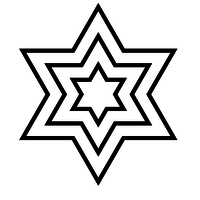 |
Menso Wo Kenten | I am not carrying your basket. A symbol of industry, self-reliance, and economic self-determination |
| 43 | 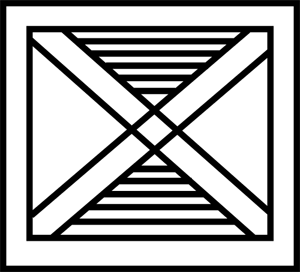 |
Mframadan |
Well-ventilated house. A symbol of fortitude, resilience and readiness to face the vicissitudes of life.
|
| 44 | 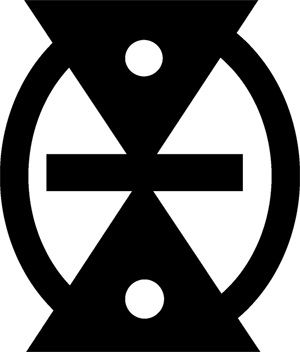 |
Mmere Dane | Time chanegs (times change). A symbol of the temporariness of good times, or life dynamics |
| 45 | 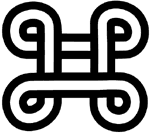 |
Mpatapo | Pacification/Reconciliation knot. A symbol of pacification, forgiveness, and reconciliation. |
| 46 | 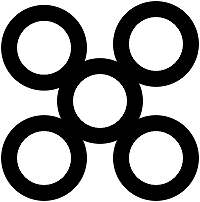 |
Mpuannum | Five tufts (of hair). A symbol of loyalty, adroitness and priestly office. |
| 47 | 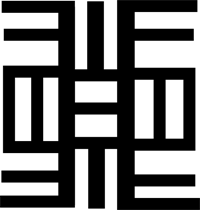 |
Nea Onnim |
He who does not know; from the proverb, "When he who does not know learns, he gets to know." Symbol of knowledge, life-long education and continued quest for knowledge. |
| 48 | 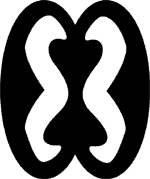 |
Nkonsonkonson | Chain. A symbol of unity, community and human relations |
| 49 | 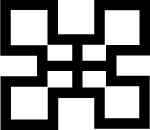 |
Nsaa |
A type of hand woven cloth. A symbol of excellence, genuineness, and authenticity. |
| 50 |  |
Nsoromma |
Star (child of the heavens). A symbol of faith and the belief in patronage and dependency on a supreme being.
|
| 51 | Nteasee | Understanding. A symbol for understanding and cooperation. | |
| 52 | 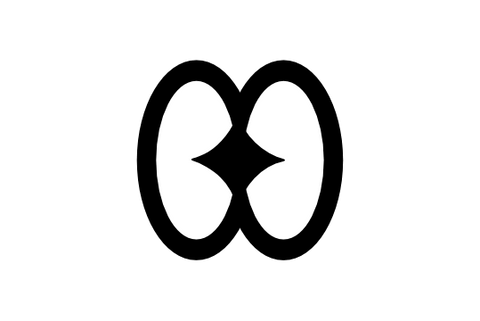 |
Nyame Biribi Wo Soro | God, there is something in the heavens. A symbol of hope and inspiration. |
| 53 |  |
Nyame Dua | Tree of God (sacred stump). A symbol of God's presence and protection. |
| 54 |  |
Nyame Nwu Na Mawu | God won't die for me to die; a symbol expressing the immortality of the human soul. |
| 55 | 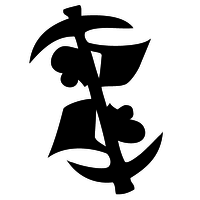 |
Okuafo Pa | Good farmer. A symbol of diligence, hard work, and entrepreneurship. |
| 56 | 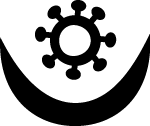 |
Osram ne Nsoromma | Moon and star. A symbol of faithfulness, fondness, harmony, benevolence, love, loyalty, and femininity. |
| 57 |  |
Owuo Atwedee | Ladder of death. A symbol of the certainty and universality of death. |
| 58 | 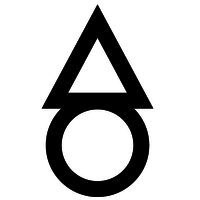 |
Sepow | Executioner's knife. A symbol of justice. |
| 59 | 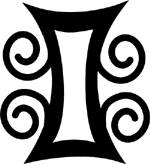 |
Tamfo Bebre | The enemy will suffer; the enemy will stew in his own juice. A symbol for ill-will, jealousy, and envy |
| 60 |  |
UAC Nkanea | UAC lights. A symbol of technological advancement |
| 61 | 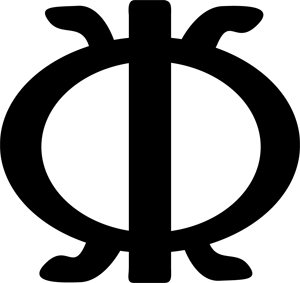 |
Wawa Aba | Seed of the wawa tree. A symbol of hardiness, toughness, and perseverance |
| 62 |  |
Woforo Dua Pa A | When you climb a good tree. A symbol of support for good causes |
| 63 |  |
Abode Santann | All seeing eye. Symbol of Divine Creator, Omnipresence. |
| 64 |  |
Abusua Pa | Good Family. Symbol of Good family, Family unity. |
| 65 |  |
Akwaaba | Welcome. Symbol of Reception, Hospitality. |
| 66 |  |
Anyi Me Aye A | If You Will Not Praise Me. This symbol warns against ingratitude and disrespect. People should strive to show appreciation at all times as being inconsiderate and ungrateful does not promote communal living. |
| 67 |  |
Asaawa | Sweet Berry. Symbol of Tenderness |
| 68 | 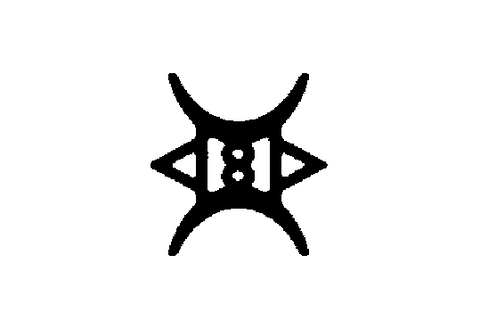 |
Asetena Pa | Good Living. Asetena pa means good living and for the Akan, there is perhaps no better evidence of good living than affluence. Being wealthy means you can afford to take care of your needs in abundance with enough to enjoy the luxuries of life without having to depend on anyone. |
| 69 |  |
Awurade Baatanfo | Good the Mother. Symbol of Nurturing, Provision |
| 70 |  |
Boafo Ye Na | Willing Helper. Symbol of Support, Help |
| 71 |  |
Esono Anantam | Elephant Footprint. Symbol of making an impact |
| 72 |  |
Gye Wáni | Enjoy Yourself. Symbol of Enjoyment, Celebration |
| 73 |  |
Kokuromotie |
Thumb. A thumbs up is an approval. This symbol signifies your participation and cooperation in what is happening. It means you are part of the team and that they have your support.
|
| 74. |  |
Kyemfere | Potsherds. The symbol represents experience, service, rarity, knowledge and heirloom. In essence, no matter how much you know or long you have been around, there will always be someone who is more experienced and may have been around longer. |
| 75. |  |
Mekyia Wo | I Salute You. Symbol of Respect |
| 76. |  |
Mmara Krado | Seal of Law. Symbol of Justice |
| 77. |  |
Mo No Yo | Congratulations. Symbol of Recognition |
| 78. |  |
Mrammuo | Crossing Paths. A life devoid of challenges is not a life truly lived. Every live has it’s own fair share of ups and downs and in your journey you will cross paths with various people who will impact your life either positively or negatively. |
| 79. |  |
Nantie Yie | Goodbye. Symbol of Farewell or Goodbye |
| 80. |  |
Nkotimsefo Mpua | Court Attendants Hair Style. Nkotimsefompua can be translated to mean the court attendants hair style.The symbol represents service and loyalty, it is meant to encourage the people to remain patriotic and uphold the honor of their land. |
| 81. |  |
Nkrabea | Destiny. Symbol of Destiny |
| 82. |  |
Nkuruma Kesse | Big Okra. The okra is one of the edible plants grown on Akan soil. For the Akan people, the Big Okra symbolizes greatness and supremacy over other things |
| 83. |  |
Nnampo Pa Baanu | Two Goods Friends. A symbol of friendship and interdependence |
| 84. |  |
Nokore | Truth. Symbol of Truth |
| 85. |  |
Nsa Ko, Na Nsa Aba | Hand Go, Hand Come. Symbol of Help, Support |
| 86. |  |
Nserewa |
Cowry Shells. Symbol of Abundance, Wealth
The cowry shells were once used as money or medium of exchange in many cultures. |
| 87. |  |
Nya Gyide | Have Faith. Symbol of Faith, Hope |
| 88. |  |
Obohemmaa | Diamond. This symbol stands for precious iitems, it embodies the rarity of these substances and it encourages the people in possession of these items to appreciate and hold them in high esteem. |
| 89. |  |
Ohene Adwa |
King’s Stool. Symbol of Authority, Leadership .
|
| 90. |  |
Ohene Aniwa |
King´s Eyes.“Ohene” means king, and “Aniwa” means eyes. This symbol implies that the eyes of the king see many things. They are vigilant, overseeing all the affairs of the nation such that nothing slips by him.
|
| 91. |  |
Ohene Kra Konmunde |
Royal Soul Pendant. The Royal Soul Pendant represents the leadership of the king.
|
| 92. |  |
Ohene Kye |
King´s Crown. The crown symbolizes royalty and the head that wears the crown has sovereign power over the people.
|
| 93. |  |
Ohene Kyinie | King´s Umbrella. Symbol of Kingship. |
| 94. |  |
Ohene Papa | Good King. Symbol of Good Governance. |
| 95. |  |
Osiadan Nyame |
God the Builder. The symbol represents the power and strength of the creator to erect, furnish, and prepare us to be ready to reflect His image, because he is our Nyame, our builder.
|
| 96. |  |
Otumfuo Wuo Ye Ya | The King is Dead. |
| 97. |  |
Owia a Repue |
Rising Sun. Owia A Repue literally means rising sun. The sun rises everyday bringing with it warmth, hope and strength to face life anew.
|
| 98. |  |
Pagya |
Strikes Fire. The symbol is one of the few symbols of war and it is used to incite the citizens to be brave and courageous even in the face of danger.
|
| 99. |  |
Som Onyankopon | Worship God. Symbol of Worship |
| 100 |  |
Sunsum | The Soul. |
| 101 |  |
Tabono |
Oars. Tabono means “oar” or “paddle” in the Adinkra language of Western Africa. It is a symbol of unity of purpose, strength, confidence and hard work to reach a destination or goal.
|
| 102 |  |
Ti Koro Nko Agyina | One Head is not a Council. Emphasizing the importance of cooperation, Teamwork. |
| 103 | 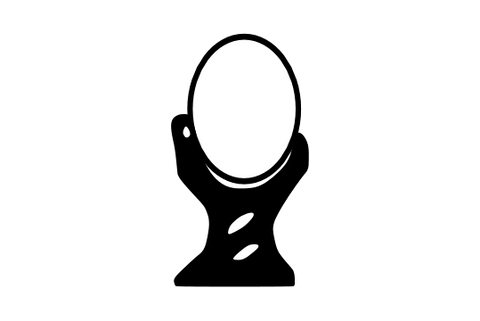 |
Tumi Te Se Kusua | Power Is Like an Egg |
| 104 |  |
Tuo Ne Akofena |
Gun and States Sword. The gun and the sword are the ultimate symbols of defense.
|
| 105 |  |
Yebehyia Bio |
We Shall Meet Again. It can be comforting to people parted from loved ones knowing they will be reunited someday.
|
| 106 |  |
Nyansapo | Wisdom. Variation of the Symbol of wise leadership, ingenuity, intelligence and patience Knot |
| 107 |  |
Me Ware Wo | I Shall Marry You. Symbol of Commitment, Perseverance |
| 108 |  |
Kete Pa | Good Bed. Symbol of a Good Marriage. |
| 109 |  |
Boa Me Na Me Mmoa Wo | Help me and let me help you. Symbol of Cooperation and Interdependence. |
| 110 |  |
Wo Nsa Da Mu A |
If your hands are in the dish. Symbol of participatory Government, Democracy and Pluralism.
|
| 111 |  |
Nea Ope Se Obedi Hene |
He who wants to be king. Symbol of Service and Leadership. From the expression “Nea ope se obedi hene daakye no, firi ase sue som ansa” meaning “He who wants to be king in the future must first learn to serve.”
|
| 112 |  |
Onyankopon Adom Nti Biribiara Beye Yie | By God’s grace, all will be well. Symbol of Hope, Providence, Faith. |
| 113 |  |
Nyame Ye Ohene | God is King. Symbol of Majesty and Supremacy of God. |
| 114 |  |
Okodee Mmowere | The Taloons of the Eagle. Symbol of Strength, Bravery, Power. |
| 115 |  |
Pempamsie | Sew in Readiness. Symbol of Readiness, Steadfastness, Hardiness. |
| 116 |  |
Mate Masie | What I hear, I keep. Symbol of Wisdom, Knowledge and Prudence. |
| 117 |  |
Sesa Wo Suban |
Change or transform your Character. Symbol of Life Transformation.
|
| 118 |  |
Nkyimu |
The crossed divisions made on adinkra cloth before stamping. Symbol of Skillfulness, Precision.
|
| 119 |  |
Kintinkantan |
Puffed up Extravagance. Symbol of Arrogance.
|
| 120 |  |
Mmusuyidee |
That which removes bad luck. Symbol of Good fortune and sanctity.
|
| 121 |  |
Fawohodie |
Independence. Symbol of Independence, Freedom, Emancipation.
|
| 122 |  |
Ahoden | Energy. Symbol of Energy, Vitality and Strength |




